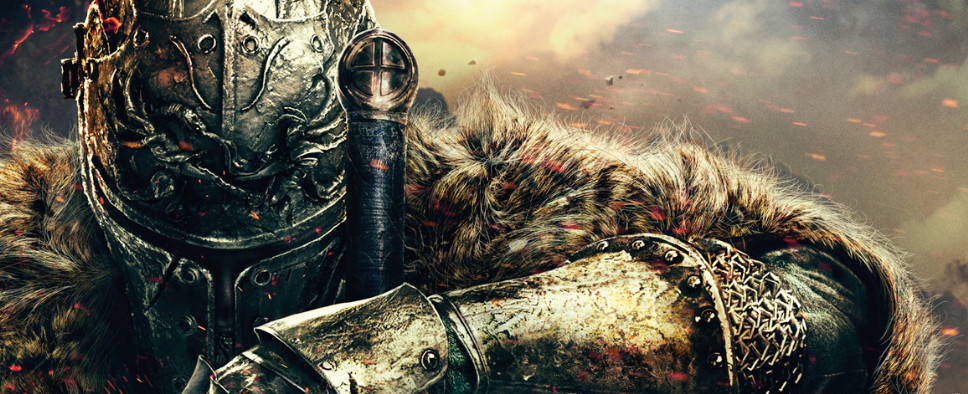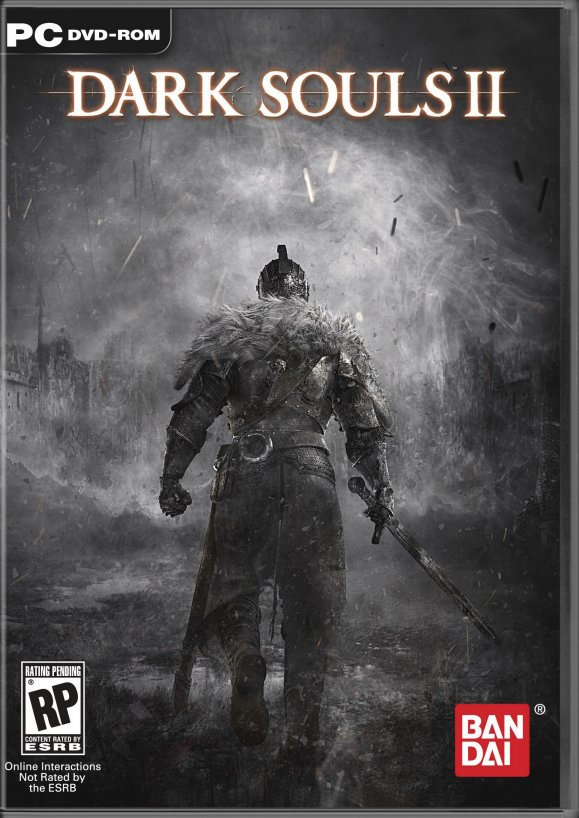Dark Souls II Review
-
Category: ReviewsHits: 12874

Article Index
Level and Encounter Design
Dark Souls II's world is larger but shares the same structure of Dark Souls, a single, connected world without loading screens, though its areas are far more visually distinct, harking back to Demon's Souls discrete worlds. Theoretically this sounds like a match made in heaven, as the game captures the qualities that made both its predecessors memorable while also being bigger than both, but the reality is not that clear-cut. On the positive side, the level design tends to be extremely good on average, and is also far more consistent than it ever was in Dark Souls (while I tend to be kinder on the latter half of that game than many are, I still wouldn't argue that Lost Izalith and Tomb of the Giants hold a candle to places like Undead Burg, Darkroot Garden or Sen's Fortress, not to mention Anor Londo). If anything, From Software clearly tried to impress with the end game areas, and it shows: with one unfortunate exception (the tedious Shrine of Amana, which has thankfully been nerfed with a recent patch), they're all great and distinct both from a visual and a game design standpoint, if sometimes a bit too short. Even when considering the whole game, it's really hard to cite a bad area, and I've taken a liking to quite a few of them: No Man's Wharf, with its unusual-for-the-series visual theme, looks deceptively short and packs quite a few surprises along the way; Forest of the Fallen Giants, used for much of the pre-release material, is also a strong example of classic Souls level design, with plenty of clever shortcuts and loops, and quite a few opportunity to explore off the side, in case you're willing to take risks; Black Gulch is a psychologically draining gauntlet specifically designed to punish players that can't keep calm and correctly assess the situation; and Earthen Peak and Iron Keep are just overall strong areas with just about the right mix of traps, environmental hazards and enemies, with the latter also including one of the best boss fights in the game.
Speaking of boss design, the game also tends to be, on average, stronger than its predecessor, but with fewer truly memorable encounters. There are a lot of bosses, and pretty much all of them are well-designed, whether it's because of quirky, unexpected attacks, or because of interesting arenas or unique mechanics, but none of them reach the heights of Ornstein and Smough, a Dark Souls pair of bosses that is explicitly evoked twice during the game. That's not to say that there aren't quite a few fun and challenging fights: Executioner's Chariot is the Souls series' first successful puzzle boss fight, leaps and bounds above the tediousness of Dragon God and Bed of Chaos; Lost Sinner is fun and hectic and only gets more brutal in New Game+; the Pursuer is the perfect wake-up call for a starting player; Smelter Demon's deceivingly simple attack patterns hide a truly challenging fight; and I cited just a few. The mistake From Software made with bosses this time around, in my humble opinion, is simply to put too many of them in the game, instead of focusing on the best and polishing them to a sheen. That said, it has to be noted that a large amount of these bosses are optional to some degree, so a non-completionist player probably wouldn't get the same kind of indigestion I did at the end of their playthrough.
The game also loves to throw curveballs at the player, like enemies spawning near bonfires, ambushes and hordes of low-level enemies, and while it always gives you the tools to deal with them, it presents these situations with perhaps excessive regularity, to the point where it feels slightly cheap. Likewise, the bonfire placement can feel a little difficult to understand at times, with bonfires placed in optional dead-end areas, and occasionally spaced with a syncopated rhythm, with longer stretches followed by two or more bonfires that are relatively closely clustered. Again, the issue I have is less with the usage of this technique, which helps make level design less monotonous, and more with its occasional abuse. Dark Souls II also has a tendency to construct areas as video game levels rather than living spaces, which isn't a flaw per se, but is certainly a different approach from the original. Ultimately, it's easy to handwave most of the idiosyncrasies of the game spaces thanks to its vague, high fantasy lore, but there's no doubt a philosophy shift occurred behind the scenes. Some of the area progression also tends to be on a linear side: you tend to pick one direction from the main hub and press on until you beat the final boss, then loop back by using a Primal Bonfire.
Which brings me to my next point: the overall world design, the way areas are pierced together in other words, doesn't feel nearly as accomplished as in the original title. The world seemingly only expands horizontally, and there are very few shortcuts that connect areas that weren't meant to be part of a certain carefully authored progression. The developers seemed almost reluctant to design the game around a continuous world, and the structure that Dark Souls introduced feels emptied as a result, now only a way to reduce loading screens and little more than that. Emblematic of this is the way fast travel is handled: in the original Dark Souls, fast travel was only available after you had completed more than half of the game, and was still limited to a few key locations, while in Dark Souls II it's available right from the beginning and lets you warp to and from any bonfire, eliminating the need to place clever shortcuts to important locations. The presence of a single, interconnected world was one of the most obvious differences between Dark Souls and its predecessor, but the latter's approach feels more appropriate for Dark Souls II, and would have allowed the team to build an equally diverse world without clumsily patching together its locations (which are wonderfully constructed when taken alone), something that Dark Souls II does fairly often. And if I were to nitpick further, I'd also note that I'm not a fan of how Dark Souls II handles scale. The single locations are excellent at conveying it, but the game also implies the player's travels span over a continent without doing anything to sell the illusion. I've always admired the way the Souls games managed to convey the scale of their towering structures and their worlds without making them tedious to navigate, so this was a personal sore point.


